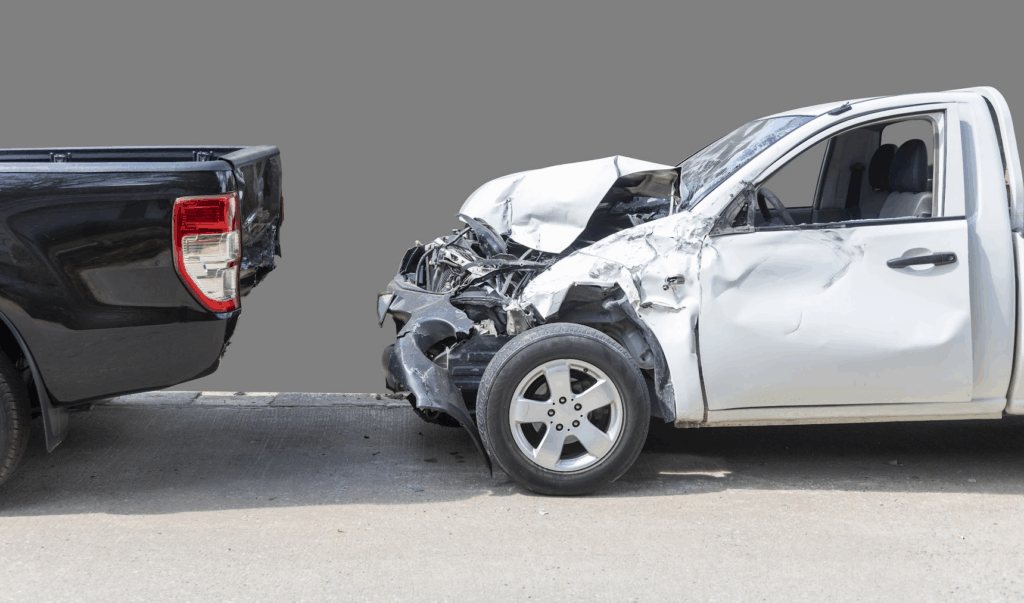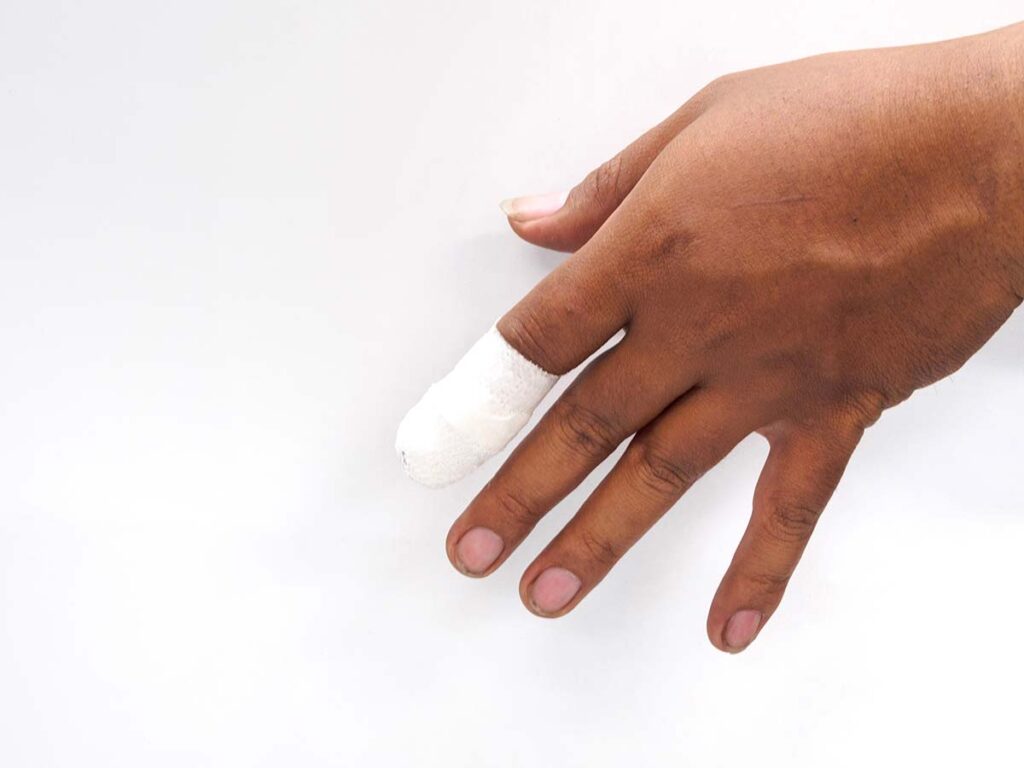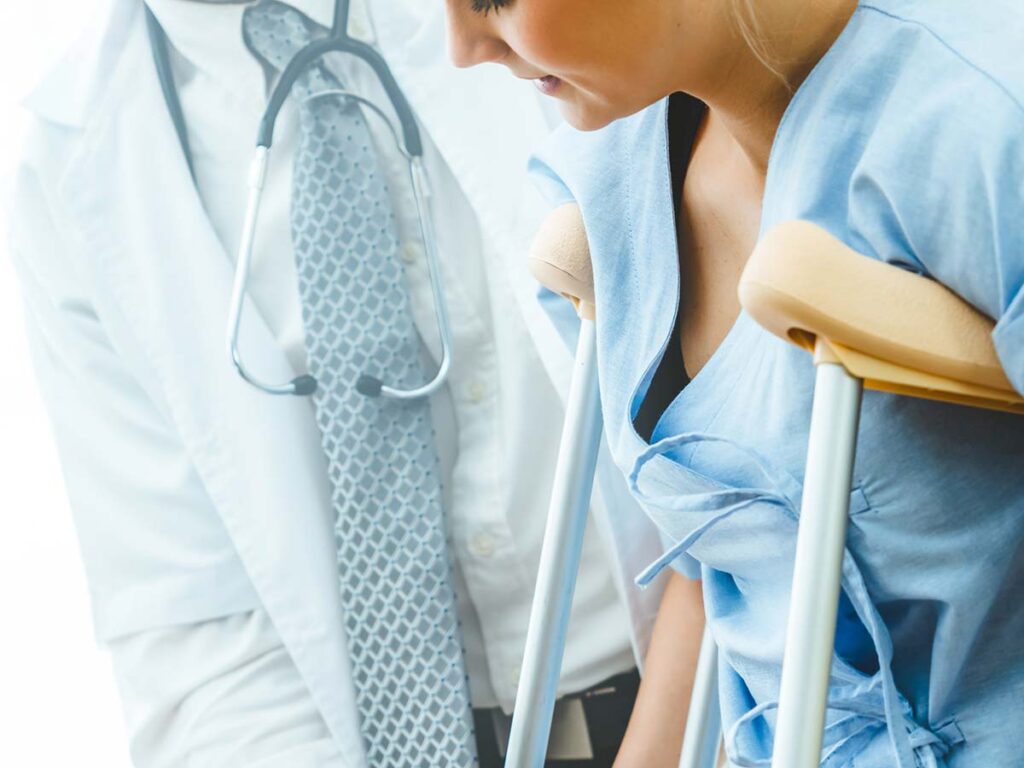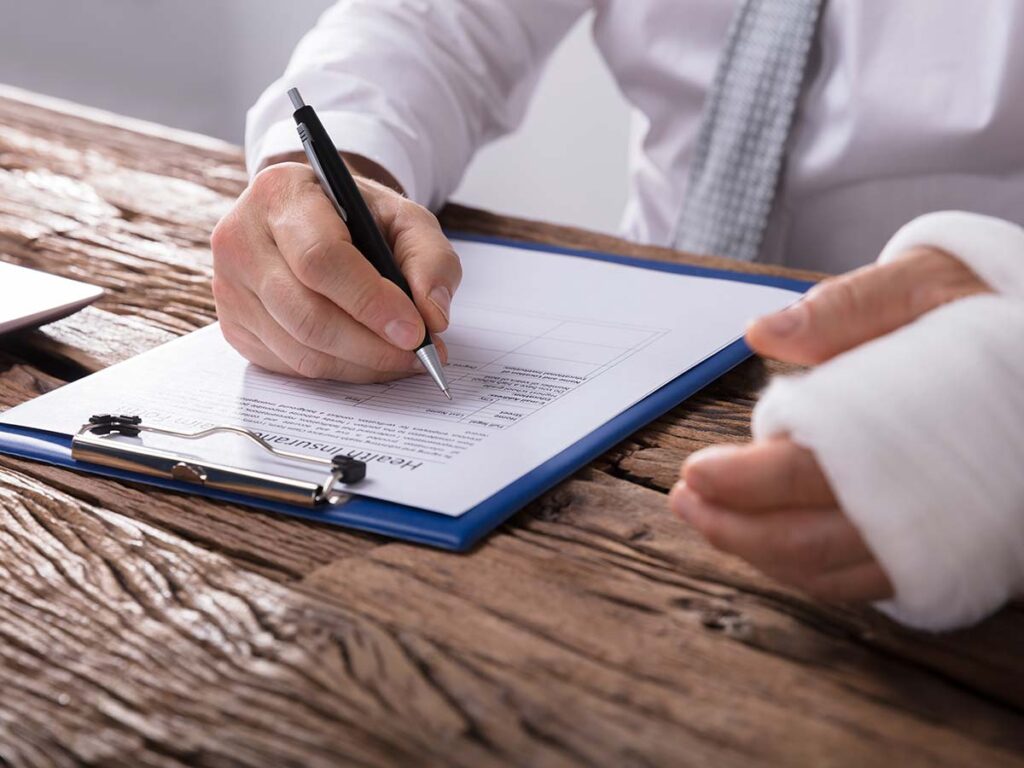Truck accidents can be catastrophic events that leave individuals grappling with physical injuries, emotional trauma, and financial burdens. When such accidents occur in Buffalo, New York, understanding the intricate factors that influence compensation and claims becomes imperative.
In this guide, we delve deep into the critical elements that can impact the outcome of your truck accident claim. This resource will help you navigate the complicated process of getting compensation for a truck accident. It covers identifying who is at fault, evaluating injuries and losses and providing a clear roadmap to follow.
Our guide is made to help you if you have been in a truck accident or if you want to understand the legal situation. It will give you the information you need to handle the difficult aftermath of the accident.
Identifying the At-Fault Party
In a truck accident claim, figuring out who is at fault is like solving a complex puzzle. Each piece, from the driver’s actions to road conditions and vehicle maintenance records, can influence who bears responsibility for the crash.
The Role of Truck Drivers
A common culprit in these accidents are truck drivers themselves. Whether it’s due to fatigue, distraction or reckless driving – their actions behind the wheel matter. But remember: not every accident involving a big rig automatically points towards driver negligence.
Trucking Companies and Liability
Sometimes, liability falls on the shoulders of those running trucking operations. If the company didn’t give proper training or make drivers work more hours than allowed by law, it means the company is being negligent.
Maintenance Issues & Manufacturers
If a mechanical failure caused an accident because regular maintenance was neglected or faulty parts were used during production, the manufacturers or maintenance providers could be held responsible. A properly maintained truck isn’t just about efficiency; it’s about safety too.
Evidence Gathering Is Crucial
In order to accurately determine responsibility, it is crucial to have solid evidence that supports your claims. This could range from dashcam footage showing erratic driving patterns right before impact to service logs revealing skipped routine checks by fleet management.
Note: Keep in mind that multiple parties might share blame in some cases.
Establishing Negligence
In the world of truck accidents, establishing negligence isn’t just about pointing fingers. It’s a meticulous process that requires gathering concrete evidence to show that the at-fault party acted carelessly and caused the accident.
Negligence is essentially the failure to use reasonable care, resulting in damage or injury to another. In Buffalo NY, we apply a standard called ‘comparative negligence‘. This means if you’re partially at fault for an accident, your compensation can be reduced by your percentage of fault.
The Four Elements of Negligence
To successfully establish negligence in a truck accident claim, four elements must be proven: duty, breach, causation, and damages.
- Duty: The defendant, typically the driver or their employer, had a legal obligation to not harm others on the road. This responsibility is clear since all drivers have this duty according to traffic laws.
- Breach: The defendant failed to fulfill this duty through some action or lack thereof. Evidence like traffic violations could serve as proof here.
- Causation: There needs to be a clear link between the breach and your injuries. It’s important to establish a direct cause-and-effect relationship between the violation and the damages you suffered.
- Damages: Lastly but importantly, actual losses, which include medical expenses due to lost wages, etc., need documentation to support these claims.
Evidence Is Key
Collecting the most vital pieces of evidence to support the argument. Examples may range from police reports, photos of the crash scene, and eyewitness testimonies.
Experts such as reconstructionists and engineers often lend their expertise to build a solid case, particularly in complex scenarios where multiple vehicles are involved. Industrial-sized trucks operate differently than typical passenger cars, therefore understanding the dynamics of how they crash plays a significant role.
Considering how complex these situations can be, it’s smart to ask for help from Brown Chiari LLP. They’re seasoned truck accident lawyers in Buffalo NY who really know their stuff when it comes to industry laws and regulations. They’ll guide you through the process smoothly, pinpoint where things went wrong, and
Calculating Damages
Determining the financial toll of a truck accident in Buffalo, NY, involves more than just adding up medical bills. You also need to consider other damages, like lost wages and emotional distress.
Medical Expenses
The first step is to tally all your medical costs. This involves accounting for ER visits, hospital stays, operations, medications, and any sustained rehabilitation from the crash that may be needed.
Include future treatments for long-lasting effects such as brain trauma or paralysis when calculating damages. These treatments can greatly impact one’s quality of life.
Lost Income
Beyond just immediate out-of-pocket expenses lies another significant aspect – lost income. If an injury forces someone off work for weeks or even months, it’s only fair they’re compensated for this loss.
In severe cases where disabilities may prevent returning to their job entirely – future earnings must also be taken into account while determining settlement amounts.
Legal experts at Brown Chiari LLP, have helped clients get compensation covering years worth of missed salary through meticulous calculations based on the client’s career trajectory before their accidents happened.
Pain & Suffering
Sometimes ignored but a very real component of damages after a truck accident is pain and suffering. Putting a price on the emotional trauma and psychological distress caused by such incidents may be difficult, but it is necessary for the compensation process.
In Buffalo NY, the amount awarded for pain and suffering in truck accident claims is influenced by factors such as the seriousness of injuries, impact on daily life, and length of recovery.
Property Damage
Finally, let’s talk about property damage. This usually covers fixing or replacing your car that got banged up in the truck crash. But don’t forget – any personal stuff inside your ride during the smash-up could also be included.
Determining Liability Limits
When you’re tangled up in a truck accident claim, knowing the liability limits of involved insurance policies is crucial. This knowledge lets you seek full compensation for your damages.
You might be asking what exactly these ‘liability limits‘? In simple terms, they’re like the maximum payout an insurer will give for a claim. It’s like having a bank account with a $5000 cap; no way to take out more than that, right? The same applies here – if the policy limit is $100k and your damages total $150k… well, there’s clearly going to be some shortfall.
The Influence of State Laws
In Buffalo NY and throughout New York state, state laws mandate minimum coverage amounts. But don’t get too comfortable with this safety net – it may not fully cover severe accidents involving commercial trucks.
Commercial trucks usually have larger insurance policies due to their potential to cause significant damage. Nevertheless, getting full compensation could still turn into an uphill battle if your claims exceed these liability limits.
Multiparty Claims: A Tangled Web
When multiple people file claims against one policy after a crash involving multiple vehicles or when one driver injures several victims, it presents a unique challenge. In these cases, everyone splits the available funds based on liability limits. It’s like sharing a pie, but without the delicious taste.
Navigating Through Uninsured/Underinsured Motorist Coverage
What if the at-fault party is uninsured or underinsured? Fear not. Your own insurance policy might have Uninsured/Underinsured Motorist (UM/UIM) coverage. It acts like a backup plan, kicking in when your damages exceed the other driver’s liability limits, or if they lack insurance altogether.
Proving Fault
Establishing fault in a truck accident is similar to solving an intricate puzzle. Every piece, from the scene of the accident to witness testimonies and state regulations, can play a pivotal role.
The Role of Negligence
Negligence is like a reckless driver on a busy road; it often leads to disaster. When you’re involved in a truck accident, proving that the other party acted negligently is crucial for your claim. It’s about showing they failed their duty of care on the roads.
A common example might be distracted driving. Let’s say another driver was more focused on their phone than observing traffic rules – this could be grounds for negligence.
Gathering Evidence
In Buffalo, NY, evidence collection isn’t just necessary; it’s paramount. Think of it as assembling all pieces of your case-puzzle together. The stronger these pieces fit together – through pictures from the crash site or police reports – the better chance you have at proving fault.
Federal & State Regulation Violations
Did you know trucks are governed by specific federal and state laws? Understanding them will let us identify if any were violated during your mishap – thereby strengthening your case further.
If we uncover any evidence of exceeding authorized load limits or logbook violations indicating exhausted drivers – Bingo! We have discovered compelling evidence indicating negligence.
The Impact Of Injuries And Losses On Compensation Amounts
Unfortunately, it is true that injuries are taken into account when determining the amount of compensation to be awarded in truck accident cases. We need to assess the severity of your injuries and other losses incurred because of this incident.
Imagine you’re a professional pianist, and due to an accident, you’ve lost mobility in your hands – the implications are vast. Losses like these factor into deciding compensation amounts.
Liability Limits And Insurance Policies
Many people frequently fail to comprehend the intricacies of their insurance plans, particularly when it relates to liability.
Investigating Accident Circumstances
The aftermath of a truck accident can be chaotic, making it crucial to dig deep into the incident’s circumstances. The probe stage isn’t just about discovering what transpired, but also delving into the causes and how it happened.
An essential step in this process involves examining Federal Motor Carrier Safety Regulations (FMCSR). Violations of these rules often point towards negligence by the truck driver or company.
Gathering Evidence at the Scene
Evidence collection begins right at the scene. It might involve taking photographs, noting down road conditions, and talking to eyewitnesses. However, it’s important to keep in mind that details tend to gradually fade away over time. So acting quickly can help capture vital information before it gets lost or forgotten.
Getting hold of police reports also proves beneficial as they provide an impartial view of events. These documents may contain valuable nuggets like admissions made by parties involved or even citations for traffic violations.
Diving Into Truck Logs & Maintenance Records
Look beyond the immediate evidence at the scene. There might be a paper trail that uncovers secrets about how the accident happened. This includes logbooks and maintenance records kept by drivers and their employers.
Truckers are required under FMCSA regulations to keep logs detailing hours on duty along with rest periods. Any violation discovered could indicate fatigue due to overwork being a potential cause.
Likewise, reviewing vehicle maintenance history helps understand if mechanical issues played any role in causing harm. Companies must maintain these records which include routine checks, brake inspections, engine tuning, etc.
After all, poorly maintained trucks don’t only pose risks to their operators but everyone else sharing the road with them.
Consulting Experts & Using Technology
While all evidence seems gathered, there’s still more to do. Expert consultations and technology can provide additional layers of clarity in the investigation process.
Consider, for instance, an expert in accident reconstruction. They can look at skid marks or car damage to piece together what happened before.
Key Takeaway: Getting to the bottom of a truck accident in Buffalo, NY is no small feat. To investigate an event properly, it is important to gather evidence promptly before it disappears. This involves examining records such as truck logs and maintenance reports for possible rule violations or signs of negligence. Using technology and expert insights can also shed light on what really happened.
Understanding Truck Regulations
The world of truck regulations can seem like a maze. But knowing these rules is vital to determining if any were violated during an accident.
Federal Motor Carrier Safety Administration (FMCSA) Rules
At the federal level, the US has established the FMCSA to set standards for commercial vehicles across the US. These rules cover aspects such as driver’s hours of service, vehicle maintenance and inspection, drug and alcohol testing protocols for drivers, and more.
A violation of any one of these could be evidence of negligence in a truck accident case. If a driver exceeds the legal limit of duty at the time of an accident, it can greatly affect your claim.
New York State Department Of Transportation (NYSDOT) Rules
In addition to federal laws, there are also state-specific guidelines set by NYSDOT that regulate operations within New York State. This includes permits required for oversized loads or certain hazardous material transportation, among other things found on their website.
Critical Violations That Can Affect Your Claim
- An expired Commercial Driver’s License (CDL)
- Poorly maintained equipment leading to brake failure or tire blowouts etc.
- Violation of Hours-of-Service regulations causing fatigue-related accidents
These breaches not only point towards negligent behavior, but they may also play a crucial role in deciding compensation.
The Role of Regulations in Your Truck Accident Claim
It’s like piecing together a puzzle – every rule or regulation that was broken forms part of the overall picture of negligence. The more pieces you have, the clearer your claim becomes.
To understand the impact of any broken rules or regulations, it is important to consider their relevance in relation to your individual circumstances. You need to grasp how they fit your unique situation. That’s when you really need a lawyer.
Key Takeaway:
Truck regulations are key to your claim after a truck accident. Knowing if any broken rules, like driver’s service hours or vehicle maintenance, can help prove negligence. Federal and state-specific laws both play roles in this. Each violation is another piece of the puzzle that makes your case stronger.
Assessing Injuries & Losses
Truck accidents can cause severe physical harm. However, it’s crucial to consider how they can affect other aspects of your life. Aside from medical expenses and evaluating injuries, it’s important to consider lost wages and emotional distress. But what about the impact on your life? From lost wages to emotional distress, assessing injuries and losses is more than just medical bills.
Injury Severity:
The first step in evaluating damages after a truck accident involves examining the severity of injuries sustained. Broken bones or lacerations may seem severe but pale compared to traumatic brain injury or spinal cord damage. These grave injuries can lead to long-term disabilities that dramatically affect the quality of life.
According to research, even minor injuries such as whiplash can have lasting effects leading to chronic pain or psychological trauma like PTSD (Post Traumatic Stress Disorder).
Economic Losses:
Accidents not only affect our health but also have economic consequences. These include treatment costs and loss of income due to missed work days. There might also be a decrease in earning capacity if you can no longer work at full strength. Additionally, there may be other expenses such as home modifications for disability accommodation.
Pain & Suffering:
We shouldn’t overlook non-economic losses either: pain and suffering caused by trauma experienced during an incident could warrant compensation, too. Unlike financial losses which are relatively straightforward to calculate using bills receipts; determining the value of pain suffering is somewhat subject to varies person to person based factors such as their tolerance level pain, type severity injury, and prognosis recovery.
For instance, someone with severe burn injuries might experience more physical discomfort and emotional distress than another person who suffered a broken arm. People’s ability to recover from trauma can vary. While some may quickly bounce back, others may struggle with depression or anxiety for an extended period of time.
Seeking Legal Representation
Facing the aftermath of a truck accident can be overwhelming. You’re dealing with injuries, loss, and uncertainty. But having an experienced legal team by your side in Buffalo, NY can make sure you get full compensation for your losses.
Why Get a Lawyer?
A skilled lawyer knows how to navigate complex insurance policies and legal processes. They’ll work tirelessly to identify the at-fault party, establish negligence and calculate damages accurately. The goal? To secure fair settlement amounts that cover medical bills, lost wages, pain & suffering – everything you need after such trauma.
The lawyers at Brown Chiari LLP, are well-versed in local Buffalo laws as well as federal regulations governing truck operations. This knowledge lets them dig deep into any violations that might have occurred during the accident.
Your Ally In A Tough Battle
Injury claims involve more than just filling out forms; they require thorough investigations into every aspect of the incident – from weather conditions on the day of crash to possible defects within the vehicle itself or even examining driver’s log books for compliance with rest periods rules. This is not something one should tackle alone.
- A good truck accident attorney will guide you through this process.
- Collect the necessary evidence.
- And advocate on your behalf against large corporations who often try to minimize payouts.
Navigating Insurance Policies And Liability Limits
Every insurance policy is different, with its own unique language and liability limits. These factors could impact the amount of compensation you might receive in the event of a truck accident. A skilled truck accident attorney can decipher these documents and help make sure that no stone is left unturned when it comes to seeking compensation.
Insurance companies might try to limit their payments, but hiring a skilled lawyer can level the playing field and make sure you receive the compensation you deserve.
Factors affecting Compensation in Truck accident Claims in Buffalo, NY: FAQs
How much are most truck accident settlements?
Truck accident settlements in Buffalo NY can vary greatly, ranging from $20,000 to over a million dollars. However, the average settlement amount is $73,109.92.
How is compensation calculated in injury cases?
The multiplier method is a common strategy to estimate general damages. It multiplies the total value of all special damages by a number between 1.5 and 5. Higher multiples of 4 or 5 are typically only used when victims suffer catastrophic injuries with significant, long-term impacts.
What is the compensation for accidents?
The compensation you get after an accident depends on factors like severity of injuries, extent of property damage and degree of negligence involved.
Following a truck accident in Buffalo, New York, seeking justice and fair compensation can be daunting due to the complexities involved. This guide provides a comprehensive overview of the critical factors that shape truck accident claims. It includes finding who is responsible, calculating damages, and looking at the roles of truck drivers, trucking companies, maintenance problems, and violations of regulations to determine who is liable.
We emphasize the importance of gathering solid evidence, establishing negligence, and navigating the intricacies of insurance policies and liability limits.
Having the right legal team by your side is crucial in this challenging journey towards seeking the compensation you rightfully deserve.
At Brown Chiari LLP, we have experienced truck accident attorneys in Buffalo, NY, who are committed to being your allies in this tough battle. Our attorneys have an in-depth understanding of local laws and federal regulations governing the trucking industry, and we leave no stone unturned in investigating your case.
Our goal is to ensure that you receive the full compensation necessary to rebuild your life after a traumatic truck accident. We gather essential evidence and advocate against large corporations and insurance company on your behalfs.
Why face this challenging process on your own when you can have Brown Chiari LLP by your side, serving as your trusted guide and advocate throughout every step of this journey? Call us today to get the legal support you need.







